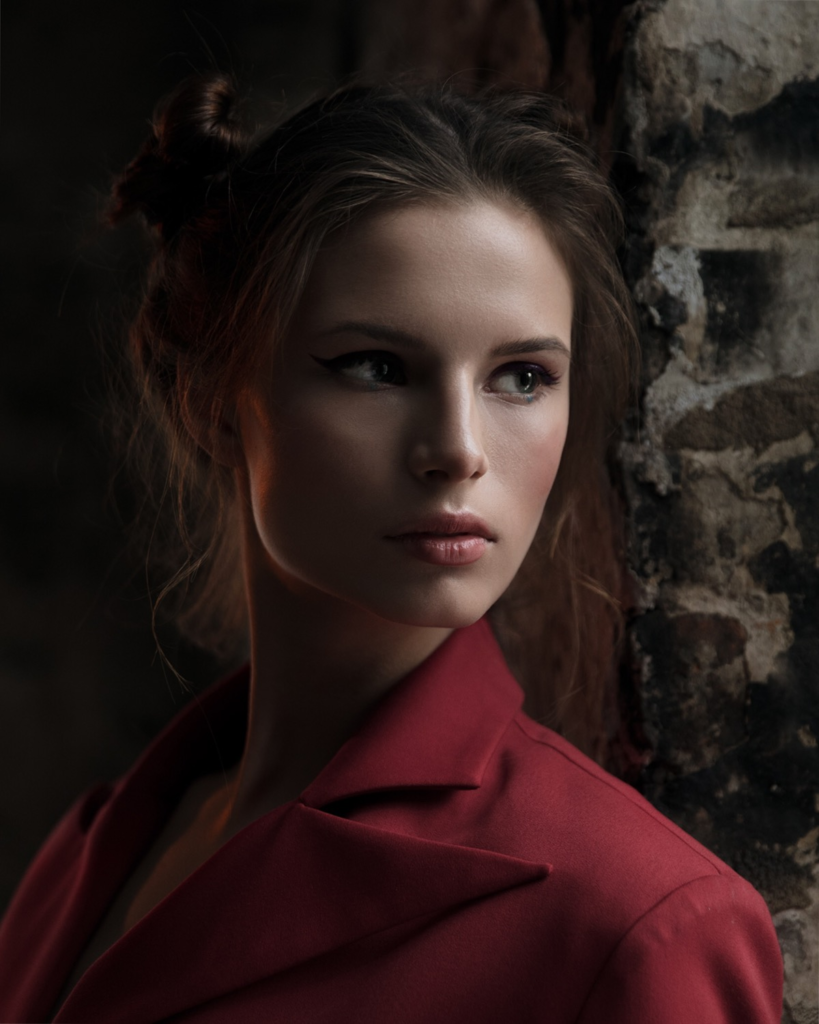Basics:
Lighting can be used in many different ways to achieve many unique photos. Studio lighting in particular is great for portraits. It is often used in many different ways, from flash to a technique called practical lighting which is where the light source is visible in the frame but appears natural light a lamp in a set of a living room. Within portraiture there are many different techniques used to achieve the perfect shot.
- Intensity of the light
- Direction of the light
- Temperature of the Light (Warm or cold + white balance)
- use of ” the golden hour”
- Using reflectors (silver/gold)
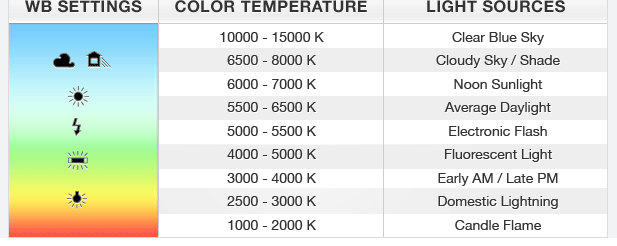
Here are some photography lighting basics to help you understand how to effectively use light in your images:
- Natural vs. Artificial Light: Natural light comes from the sun and varies in intensity and color throughout the day. Artificial light includes studio lights, flash, and other sources that can be controlled and manipulated.
- Key Light: This is the main light source in a scene, providing the primary illumination. It shapes the subject and creates highlights and shadows.
- Fill Light: This softer light is used to fill in shadows created by the key light, ensuring a balanced exposure without harsh contrasts.
- Back Light: Positioned behind the subject, this light creates separation from the background and adds depth, often resulting in a rim light effect.
- Light Direction: The angle at which light hits the subject can dramatically affect the mood and texture. Front lighting reduces shadows, while side lighting adds dimension, and back lighting creates silhouettes.
- Quality of Light: Light can be hard (direct, creating sharp shadows) or soft (diffused, creating gentle transitions). Soft light is often preferred for portraits as it flatters the subject.
- Color Temperature: Different light sources have varying color temperatures, measured in Kelvin. Warm light (lower Kelvin) appears yellow/orange, while cool light (higher Kelvin) appears blue. Understanding this helps achieve the desired mood.
- Modifiers: Tools like reflectors, diffusers, and softboxes can modify the quality and direction of light, allowing for greater control over the lighting in your images.
- Exposure Triangle: Understanding how aperture, shutter speed, and ISO work together helps you properly expose images in different lighting conditions.
- Lighting Patterns: Familiarize yourself with common lighting patterns (like Rembrandt, butterfly, and loop lighting) to create specific effects and enhance your portraits.
By mastering these basics, you can effectively manipulate light to enhance your photography and achieve the desired artistic outcomes.
Butterfly Lighting
A type of portrait lighting technique, used primarily in a studio setting. Its name comes from the butterfly-shaped shadow that forms under the nose because the light comes from above the camera. You may also hear it called ‘paramount lighting’ or ‘glamour lighting’.
Butterfly lighting, also known as “paramount lighting,” is a popular portrait lighting technique characterized by the creation of a butterfly-shaped shadow under the subject’s nose. This effect is achieved by placing the key light directly in front of and above the subject, typically at a 45-degree angle. The resulting shadows enhance the cheekbones and create a flattering, sculpted look, making it particularly effective for beauty and glamour photography. Butterfly lighting works well with a soft light source, as it minimizes harsh shadows and produces a smooth, even illumination on the face. This technique is often used to convey a sense of elegance and sophistication, making it a favorite among portrait photographers.
What is it used for?
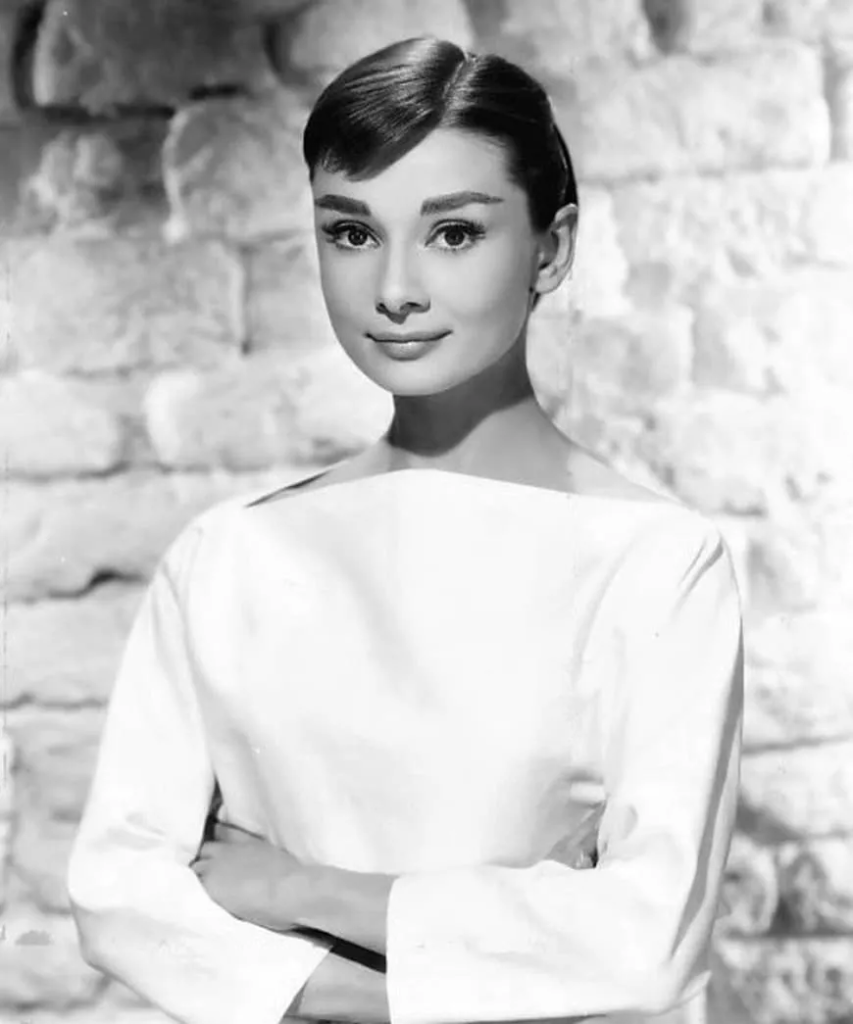
Butterfly lighting is used for portraits, because it is a lighting that flatters almost everyone, as it can highlight cheekbones and create shadows under them, as well as under the neck, which makes the model look thinner. This makes it the most commonly used lighting setups. This lighting has also been used for famous stars, from classic Hollywood and that’s why it’s also called Paramount lighting.
People use butterfly lighting for several reasons:
- Flattering Appearance: The technique accentuates cheekbones and creates a sculpted look, often resulting in a more aesthetically pleasing portrait.
- Soft Shadows: When using a soft light source, butterfly lighting minimizes harsh shadows, providing a smooth and even illumination that flatters the subject’s features.
- Elegant Aesthetic: This lighting style conveys a sense of sophistication and glamour, making it ideal for beauty, fashion, and high-end portrait photography.
- Highlighting Details: By illuminating the face from above, butterfly lighting highlights facial features such as the eyes and lips, enhancing the overall impact of the image.
- Versatility: It can be effectively used in various contexts, from studio portraits to outdoor shoots, allowing photographers to achieve a polished look in diverse settings.
Overall, butterfly lighting is favored for its ability to enhance beauty and create striking, professional-quality images.
How to create it:
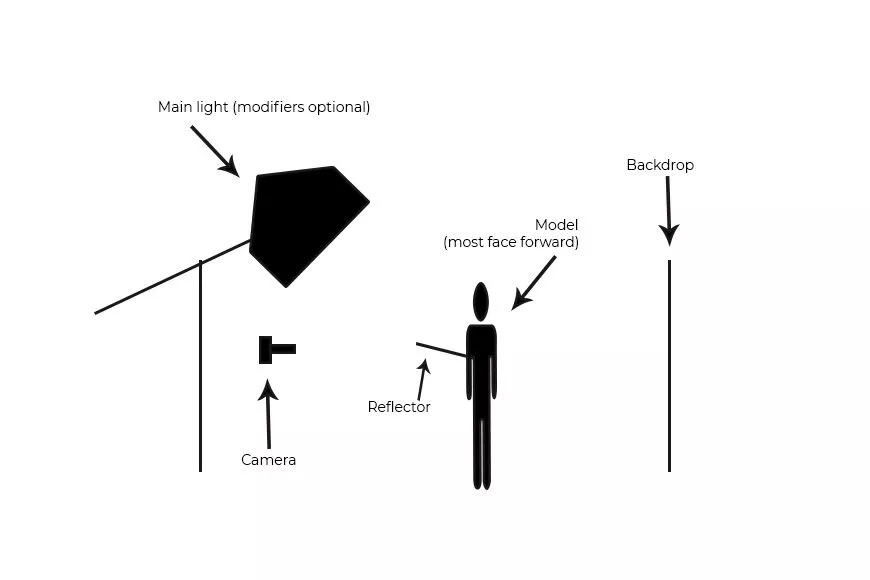
Butterfly lighting requires a key light that can be a flash unit or continuous. If continuous, it can be artificial or natural. In other words, you can use strobes, speed lights, LEDs or even the sun. A butterfly lighting effect refers to the setup and not to the quality of light – it can be soft or hard light depending on the effect you want. If you want to create a soft light, you’ll need to use modifiers. A beauty dish is perfect for glamour photography as it distributes the light evenly and smooths the skin. You can also use a soft box or an umbrella. Instead, if you want to have hard light, you can leave the light source as it is. Alternatively, you can use grid spots to direct it and create different effects.
To use butterfly lighting effectively, follow these steps:
- Position Your Light Source: Place the key light directly in front of and above the subject, typically at a 45-degree angle. This positioning is crucial for creating the signature butterfly shadow under the nose.
- Choose the Right Light: Use a soft light source, such as a softbox or umbrella, to minimize harsh shadows and create a flattering glow on the subject’s face.
- Adjust the Distance: Experiment with the distance of the light from the subject. Bringing the light closer can create a more dramatic effect, while moving it further away will soften the light.
- Control the Fill Light: If necessary, use a fill light positioned at the opposite angle to reduce shadows without overpowering the key light. This helps maintain balance in the illumination.
- Check the Shadows: Ensure the shadows created under the nose are even and not too harsh. You can adjust the height and angle of the key light as needed.
- Consider Background and Environment: Pay attention to the background and how it interacts with the lighting. A clean, uncluttered background can enhance the subject’s prominence.
- Use Reflectors: If desired, add a reflector below the subject to bounce light back onto their face, further softening shadows and enhancing illumination.
- Experiment with Angles: While maintaining the primary setup, feel free to adjust the angle slightly to find the most flattering position for your subject.
By following these steps, you can effectively utilize butterfly lighting to create beautiful, professional-quality portraits.
Experimenting:
Once you have the key light set up, it’s time to fill the shadows. You can use a reflector to bounce the light back up and soften the shadow under the chin and the one from under the nose. To do so, position the reflector under the subject’s face. Start at waist level and see how it looks. If the shadows are still strong, move it closer to the face and so on. Experiment with different positions to achieve different effects. You can also change the colour of the reflector. A white one will give you a neutral tone, while a golden one gives a warming overcast. Once you’re happy with your butterfly lighting, direct the model to have a striking fashion pose or whatever the desired pose or expression you’re looking for. Just keep in mind that the subject’s face needs to be towards the light in order to have the butterfly shadow under the nose.
Examples:
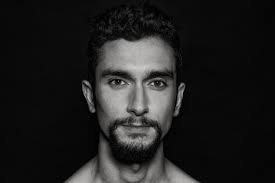
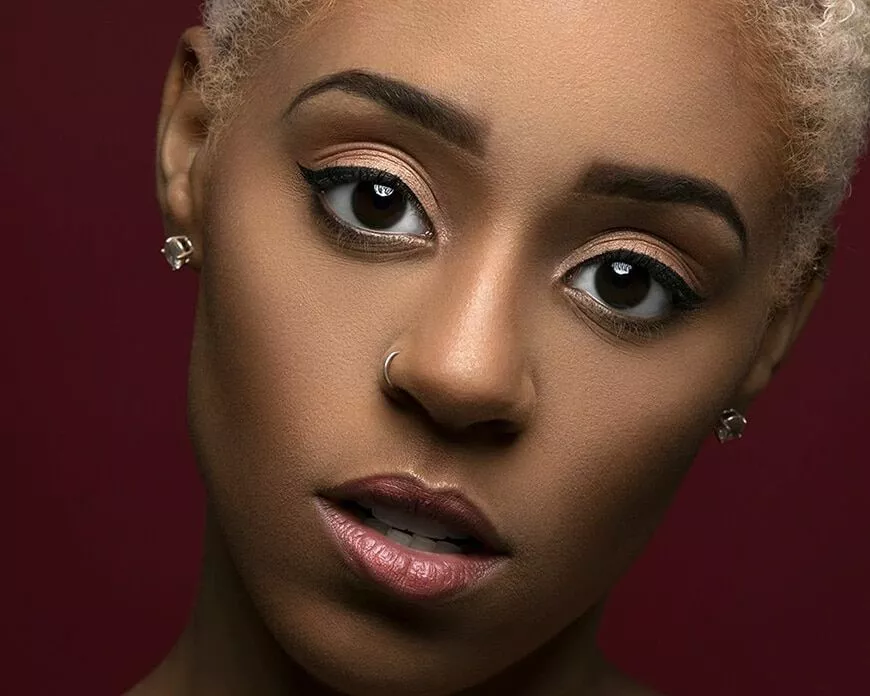
Chiaroscuro lighting
‘Chiaroscuro’ is an Italian term for lightdark as this lighting technique creates a bold contrast between light and dark. This can also be defined as a high-contrast lighting technique that utilises a low-key lighting setup to achieve contrast between the subject and a dark background.
Chiaroscuro is an artistic technique that uses strong contrasts between light and shadow to create a sense of volume and three-dimensionality in an image. The term, derived from the Italian words “chiaro” (light) and “scuro” (dark), emphasizes the interplay of light and dark tones to enhance the dramatic effect and depth of a composition.
In painting and photography, chiaroscuro can be used to direct the viewer’s attention to specific areas of the artwork, convey mood and emotion, and add a sense of realism. This technique has been employed by many renowned artists, including Caravaggio and Rembrandt, who used it to create striking visual narratives. In photography, chiaroscuro can be achieved through careful manipulation of lighting, often involving a single light source to create deep shadows and bold highlights, enhancing the subject’s form and texture.
What is it used for?
This form actually originated in paintings during the 15th century in Italy and Holland (Flanders), yet this was truly developed a century later in Mannerism and Baroque art. Today, it is prominently used in film-making due to the striking and dramatic images this technique produces. This form of lighting adds a sense of mystery to the characteristics of the subject, making their features become framed and draw attention to the viewers eye in places they would not normally see. Caravaggio and Rembrandt used this in their paintings where dark subjects would be dramatically shined on by a shaft of light:
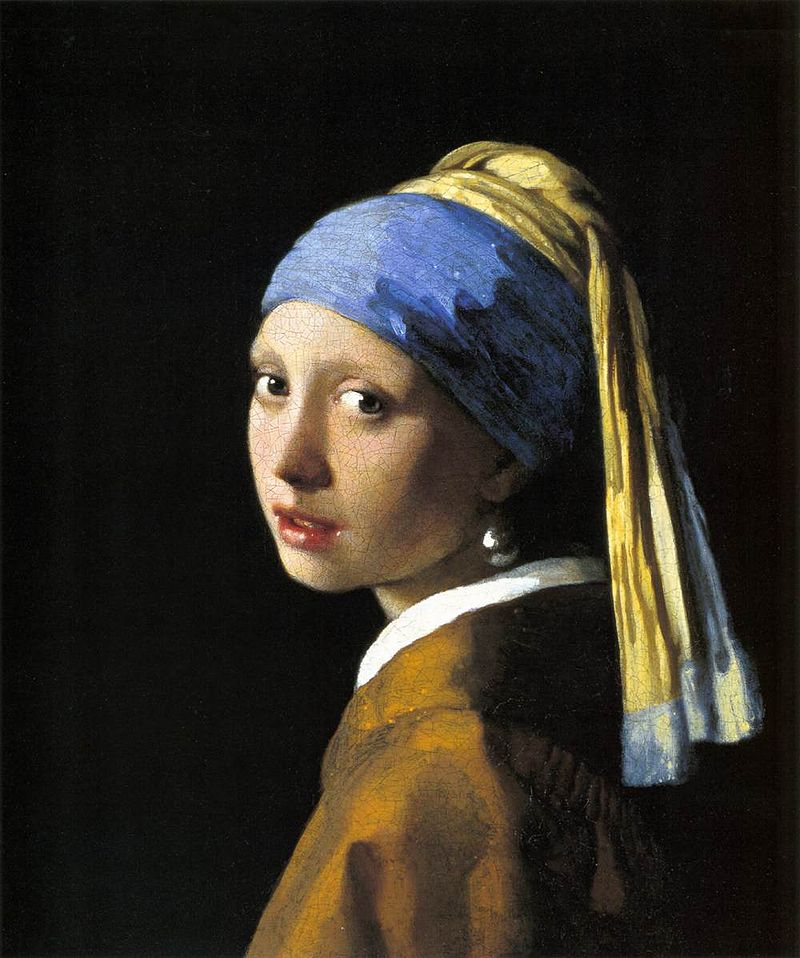
How to create it:
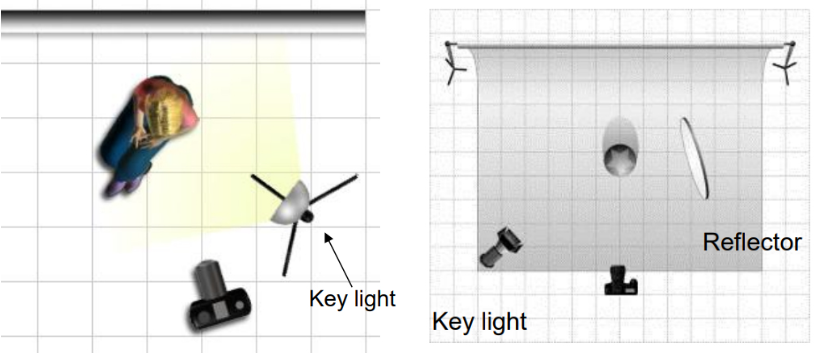
In photography, these are produced by using one key light and a variation using a reflector that reflects light from the key light back onto the sitter. The reflectors colour can be changed to produce a different tone onto the subject.
Experimenting:
Using flash, there are a range of possibilities as, depending on how you want the images produced, you can create images in low or high lighting scenarios through:
- flash “bouncing”
- fill-in flash
- TTL / speedlight flash
- remote / infra-red flash (studio lighting)
- fast + slow synch flash
- light painting c/w slow shutter speeds

For example, flash “bouncing” softens the effects and creates a larger fill area. This must be done on white walls or ceilings as the flash is directed either to the side or above the subject.
Examples:
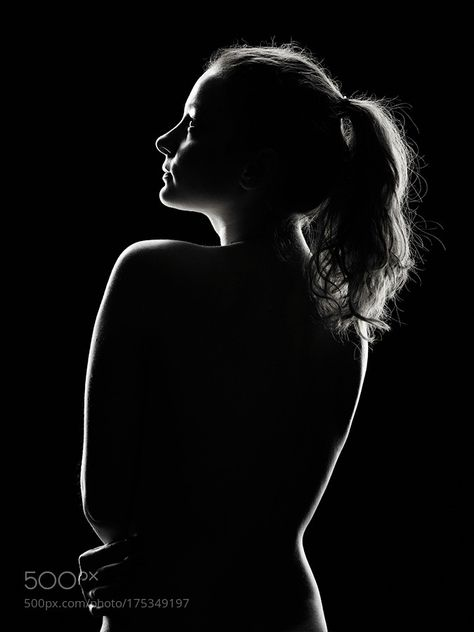
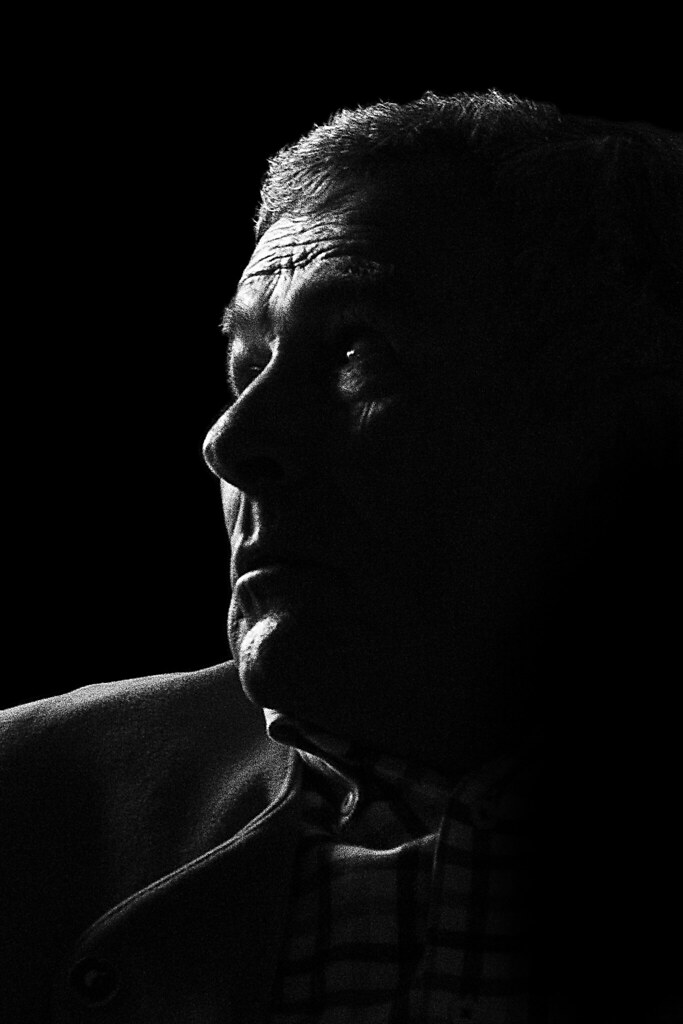
Rembrandt lighting
Rembrandt lighting is a technique named after the Dutch painter Rembrandt. Its the cauterized by a small triangle of light on the subject cheeks opposite the light source, creating a dramatic and shadowy effect. Its often used in portrait photography to add depth and dimension to the subjects face.
What is it used for?
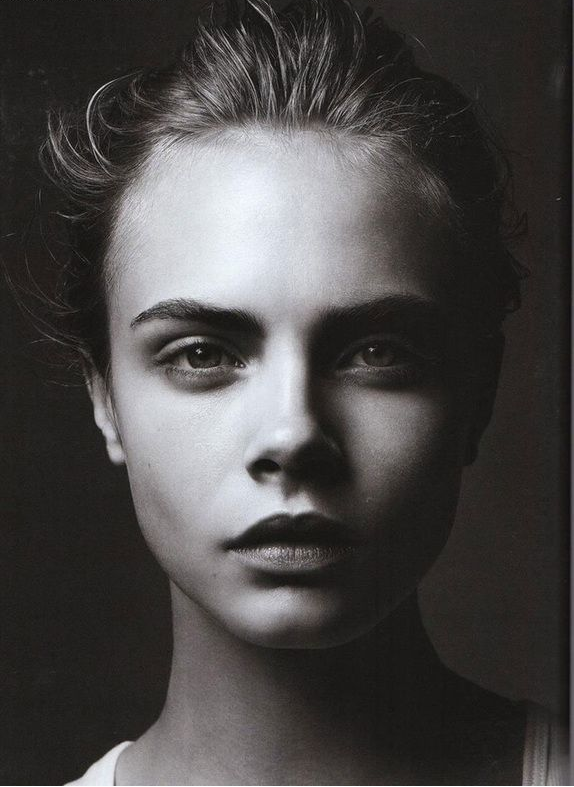
Many Photographers use Rembrandt lighting because it creates a dramatic and artistic effect in portraits. it involves positioning the main light, source at a 45-degree angle to the subject. creating a triangle-shaped highlight on the cheek opposite the light source. This technique adds depth and dimension to the subjects faces, accentuating their features and creating a sense of mood and atmosphere in the photograph.
How to create it:
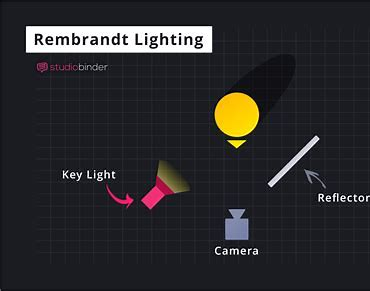
It consists of using one light and one reflector (or two lights), instantly creating shadows and contrast. This specific technique creates a triangular shape under the subjects eye which increases the emphasis of drama to the viewer. This draws them in because the eyes are the main focal point in portraiture and something that can take on many forms and show emotion. This makes a more appealing image as it has a creative side to it – it isn’t just general light on the face and exposes the features of the face more.
Experimenting:
The lighting depends on its position to the subject. In this case, it must be 40 to 45-degree angle and higher than the subject. Flashlights and continuous lights are the correct ones to use.
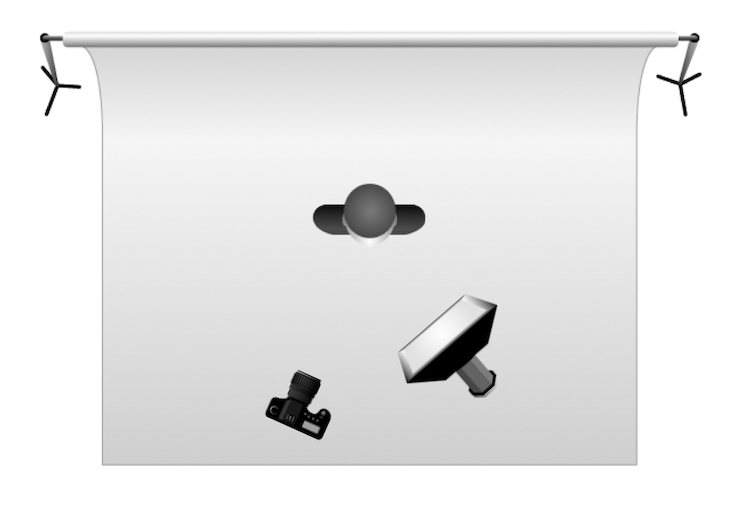
Depending on how much of your subject you are aiming to shoot, you should use a 35mm or 50mm if you’re looking at including more of the subject than just the head and shoulders. However, 50mm will give a nice depth of field.
Examples:
